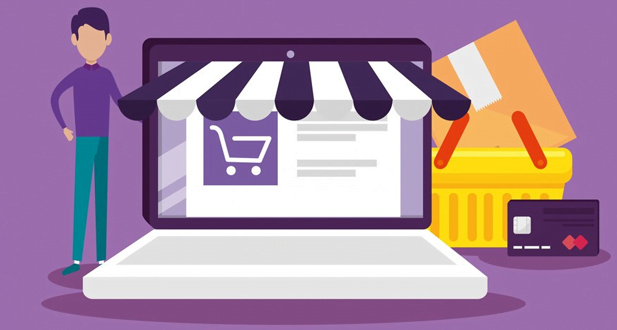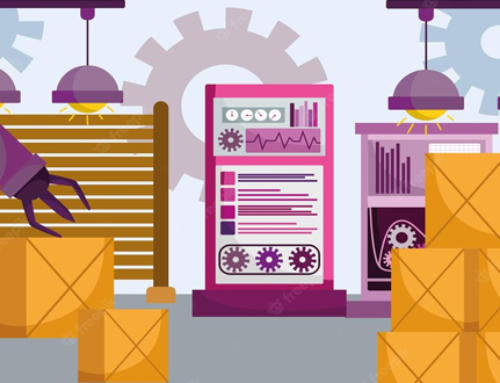Introduction of Purchase on Odoo
Purchase management plays a pivotal role in the operational efficiency and financial health of any organization. It involves the strategic planning, procurement, and control of goods and services essential for business operations. In this comprehensive discourse, we delve into the significance of purchase management, its key components, and the challenges faced in traditional purchase processes.
The Importance of Purchase Management

Efficient purchase management is vital for several reasons:
- Cost Control: One of the primary objectives of purchase management is to optimize costs without compromising quality. By negotiating favorable terms with suppliers, organizations can minimize expenses, leading to improved profitability.
- Risk Mitigation: Effective purchase management helps mitigate risks associated with supply chain disruptions, price fluctuations, and supplier reliability. By diversifying suppliers and establishing contingency plans, organizations can safeguard against potential disruptions.
- Supplier Relationship Management: Building strong relationships with suppliers is crucial for ensuring timely deliveries, quality assurance, and favorable terms. Purchase management facilitates effective communication and collaboration with suppliers, fostering mutually beneficial partnerships.
- Inventory Management: Streamlining procurement processes enables better inventory management by preventing overstocking or stockouts. This helps minimize carrying costs and maximizes working capital efficiency.
- Compliance and Transparency: Purchase management ensures adherence to regulatory requirements and ethical standards in procurement practices. Transparent processes foster trust among stakeholders and mitigate the risk of legal and reputational damage.
Key Components of Purchase Management

Effective purchase management encompasses several key components:
- Strategic Planning: Strategic planning involves defining procurement objectives, assessing requirements, and formulating procurement strategies aligned with organizational goals. This phase entails analyzing market trends, identifying potential suppliers, and establishing procurement policies and procedures.
- Supplier Selection and Evaluation: Selecting the right suppliers is critical for ensuring quality, reliability, and cost-effectiveness. Purchase management involves evaluating supplier capabilities, conducting due diligence, and negotiating contracts to secure favorable terms.
- Order Processing: Efficient order processing entails converting purchase requisitions into purchase orders, verifying specifications, and transmitting orders to suppliers. Streamlining this process minimizes lead times, reduces errors, and ensures timely fulfillment of requirements.
- Contract Management: Contract management involves drafting, negotiating, and managing contracts with suppliers. This includes defining terms and conditions, monitoring compliance, and resolving disputes to uphold contractual obligations.
- Inventory Control: Inventory control aims to optimize inventory levels while ensuring adequate stock availability. Purchase management involves forecasting demand, monitoring inventory levels, and implementing inventory replenishment strategies to minimize carrying costs and stockouts.
- Supplier Relationship Management: Cultivating strong relationships with suppliers is essential for fostering collaboration, resolving issues, and driving continuous improvement. Purchase management involves regular communication, performance monitoring, and feedback mechanisms to nurture mutually beneficial partnerships.
Challenges Faced in Traditional Purchase Processes

- Manual Processes: Many organizations still rely on manual, paper-based procurement processes, which are time-consuming, error-prone, and lack transparency. Manual processes hinder efficiency, increase administrative burden, and impede timely decision-making.
- Fragmented Systems: Siloed systems and disparate data sources make it challenging to consolidate procurement information and gain holistic insights. Lack of integration between procurement, finance, and inventory systems hampers efficiency and visibility across the procurement lifecycle.
- Limited Visibility: Inadequate visibility into procurement activities and spending patterns impedes effective decision-making and cost control. Without real-time data and analytics, organizations struggle to identify savings opportunities, mitigate risks, and optimize procurement strategies.
- Supplier Management Challenges: Managing relationships with multiple suppliers across various categories poses challenges such as inconsistent performance, communication barriers, and dependency risks. Ineffective supplier management can lead to quality issues, delivery delays, and increased costs.
- Compliance and Regulatory Risks: Ensuring compliance with regulatory requirements and ethical standards is a complex task, especially in global supply chains. Failure to comply with regulations such as environmental standards, labor laws, and trade regulations can result in legal consequences and reputational damage.
Introducing Odoo
What is Odoo?
Odoo, formerly known as OpenERP, is an open-source enterprise resource planning (ERP) software suite that offers a wide range of integrated business applications. Developed by Belgium-based company Odoo S.A., Odoo provides modules for various functions, including sales, CRM, accounting, inventory management, human resources, and purchase management, among others. With its modular structure and customizable nature, Odoo caters to businesses of all sizes across diverse industries.
The core philosophy of Odoo revolves around simplicity, flexibility, and user-friendliness. Unlike traditional ERP systems that often require extensive customization and expertise to implement, Odoo offers a highly intuitive interface and modular architecture, allowing businesses to tailor the software to their specific needs without extensive coding or IT support.
Features and Capabilities
Odoo encompasses a comprehensive set of features and capabilities designed to streamline purchase management processes effectively. Some key features include:
- Purchase Order Management: Odoo allows users to create, track, and manage purchase orders seamlessly. Users can generate purchase orders directly from requisitions or sales orders, specify vendors, manage price negotiations, and track order status in real-time.
- Vendor Management: With Odoo, businesses can maintain a centralized database of vendors, including contact information, pricing agreements, performance metrics, and historical transactions. This enables efficient vendor selection, evaluation, and collaboration.
- Inventory Integration: Odoo seamlessly integrates purchase management with inventory control, ensuring optimal stock levels and minimizing stockouts or overstock situations. Users can automatically update inventory levels upon receipt of goods, track stock movements, and synchronize data across departments.
- Approval Workflows: Odoo offers customizable approval workflows for purchase orders, allowing businesses to define multi-level authorization hierarchies based on predefined criteria such as purchase amount, vendor, or product category. This ensures compliance with internal policies and regulatory requirements while streamlining the approval process.
- Reporting and Analytics: Odoo provides comprehensive reporting and analytics tools that enable users to gain insights into procurement performance, vendor relationships, purchasing trends, and cost analysis. Customizable dashboards, KPIs, and graphical representations empower users to make informed decisions and drive continuous improvement.
- Integration with Other Modules: One of the key strengths of Odoo is its seamless integration with other modules such as accounting, sales, inventory, and project management. This integration facilitates data sharing, process automation, and holistic business management.
Advantages of Using Odoo for Purchase Management
Implementing Odoo for purchase management offers numerous advantages for businesses:
- Streamlined Processes: Odoo automates and streamlines purchase management processes, from requisition to payment, reducing manual intervention, errors, and processing time. This leads to increased efficiency and productivity across the procurement lifecycle.
- Cost Savings: By optimizing vendor selection, negotiation, and contract management, Odoo helps businesses negotiate better terms, lower prices, and reduce procurement costs. Additionally, improved inventory management and demand forecasting minimize carrying costs and stock obsolescence.
- Enhanced Visibility and Control: With Odoo’s centralized platform, businesses gain real-time visibility into their procurement operations, including pending orders, delivery schedules, inventory levels, and vendor performance. This visibility enables proactive decision-making, risk mitigation, and performance monitoring.
- Improved Collaboration: Odoo facilitates seamless collaboration between internal stakeholders and external partners, such as vendors and suppliers. Through integrated communication channels, document sharing, and feedback mechanisms, teams can collaborate more effectively, resolve issues promptly, and foster stronger relationships.
- Scalability and Flexibility: Whether a small startup or a large enterprise, businesses can scale and adapt Odoo to their evolving needs with ease. The modular architecture allows for incremental implementation and customization, ensuring flexibility and future-proofing investment.
- Regulatory Compliance: Odoo helps businesses maintain compliance with regulatory requirements, industry standards, and internal policies through built-in features such as approval workflows, audit trails, and document management. This reduces the risk of non-compliance penalties and reputational damage.
Leveraging Odoo for Efficient Purchase Management
-
Setting Up Suppliers and Vendor Management:
Effective supplier management is fundamental for ensuring timely deliveries, quality products, and favorable terms. Odoo provides robust tools for managing supplier information, such as contact details, payment terms, and pricing agreements. With Odoo’s supplier management module, businesses can centralize vendor data, track performance metrics, and maintain clear communication channels. Additionally, Odoo enables the categorization of suppliers based on criteria like location, product category, or performance, simplifying the selection process for purchase transactions.
-
Streamlining Purchase Requisitions:
Purchase requisitions serve as the initial step in the procurement process, where employees request goods or services needed for their respective departments. Odoo offers a user-friendly interface for creating, reviewing, and approving purchase requisitions, streamlining the workflow and reducing manual interventions. Through customizable approval workflows, businesses can enforce authorization protocols and ensure compliance with budgetary constraints. Furthermore, Odoo’s integration capabilities enable seamless communication between purchase requisitions and other modules, such as inventory and accounting, ensuring data consistency and accuracy throughout the procurement cycle.
-
Automating Purchase Orders:
Generating purchase orders manually can be labor-intensive and prone to errors, leading to delays and inconsistencies in procurement operations. Odoo’s purchase management module automates the creation and processing of purchase orders, optimizing the procurement workflow and enhancing efficiency. By leveraging predefined templates and configurable parameters, businesses can standardize purchase order formats, specify delivery schedules, and enforce pricing agreements with suppliers. Moreover, Odoo’s real-time synchronization feature ensures that purchase orders reflect updated inventory levels and demand forecasts, minimizing stockouts and overstock situations.
-
Inventory Integration and Stock Management:
Effective inventory management is essential for maintaining optimal stock levels, minimizing carrying costs, and fulfilling customer demands promptly. Odoo seamlessly integrates purchase management with inventory control, providing real-time visibility into stock levels, reorder points, and lead times. Through automated inventory updates triggered by purchase transactions, businesses can accurately track stock movements, monitor replenishment needs, and optimize warehouse operations. Additionally, Odoo’s advanced forecasting algorithms analyze historical data and market trends to generate demand forecasts, facilitating proactive inventory planning and risk mitigation.
-
Invoice Tracking and Payment Management:
Managing supplier invoices and tracking payment status is critical for maintaining financial stability and fostering strong vendor relationships. Odoo offers comprehensive invoicing and payment management functionalities, enabling businesses to streamline invoice processing, reconcile accounts payable, and expedite payment settlements. With Odoo’s automated invoice validation and approval workflows, businesses can enforce validation rules, verify invoice accuracy, and expedite payment approvals. Furthermore, Odoo’s integration with accounting modules ensures seamless synchronization of financial transactions, enabling real-time visibility into cash flow and financial performance metrics.
Customizing Odoo for Your Purchase Workflow
-
Tailoring Workflows to Fit Your Business
One of the primary advantages of Odoo is its customizable nature, allowing businesses to tailor workflows to fit their unique requirements. Purchase workflows can vary significantly depending on factors such as industry, company size, and specific operational needs. With Odoo, businesses have the flexibility to define custom stages, approval hierarchies, and automation rules to streamline their procurement processes.
For example, a manufacturing company may require a multi-step approval process for purchase orders involving high-value items, involving approvals from multiple departments such as finance, production, and quality control. Using Odoo’s intuitive interface, businesses can easily configure these complex workflows to ensure compliance and accountability at every stage.
-
Configuring Approval Processes
Approval processes play a crucial role in ensuring that purchases are authorized by the appropriate stakeholders before proceeding. Odoo offers robust features for configuring approval hierarchies based on roles, departments, or specific criteria. This allows businesses to enforce compliance with internal policies and regulatory requirements while minimizing delays and bottlenecks in the procurement process.
By defining approval rules within Odoo, businesses can automate the approval process based on predefined criteria such as purchase amount, vendor category, or purchase category. For instance, purchases below a certain threshold may be automatically approved, while those exceeding the threshold require managerial approval. This streamlines the process, reduces manual intervention, and improves overall efficiency.
-
Integrating Third-Party Applications
In today’s interconnected business landscape, integration with third-party applications is essential for seamless data exchange and process automation. Odoo provides a robust framework for integrating with a wide range of third-party applications, including accounting software, inventory management systems, and supplier portals.
By integrating Odoo with other business systems, businesses can eliminate data silos and ensure real-time visibility into the procurement process. For example, integrating Odoo with accounting software allows for automatic generation of purchase invoices, updating of financial records, and reconciliation of payments. Similarly, integration with inventory management systems enables automatic updating of inventory levels and seamless synchronization of data across different departments.
-
Implementing Custom Reports and Analytics
Effective decision-making relies on timely access to accurate data and insightful analytics. Odoo offers powerful reporting and analytics capabilities that enable businesses to gain valuable insights into their purchase workflow performance. However, to extract maximum value from these features, businesses may need to customize reports and analytics dashboards to suit their specific requirements.
With Odoo’s customizable reporting engine, businesses can create tailored reports that provide insights into key metrics such as purchase orders processed, vendor performance, and inventory turnover. These reports can be scheduled for automated generation and distribution, ensuring that stakeholders have access to the information they need to make informed decisions.
Best Practices for Optimal Purchase Management with Odoo
-
Ensure Data Accuracy and Consistency
Data accuracy is paramount in purchase management as it directly impacts decision-making processes and overall operational efficiency. With Odoo, organizations can centralize procurement-related data, ensuring consistency and accuracy throughout the purchasing cycle. Here are some best practices to ensure data accuracy and consistency:
1.1 Centralize Data Management:
Leverage Odoo’s centralized database to store all procurement-related information, including vendor details, product specifications, pricing, and purchase orders. By centralizing data, you eliminate silos and reduce the likelihood of errors caused by duplicate or outdated information.
1.2 Implement Data Validation Checks:
Configure Odoo to enforce data validation checks at various stages of the procurement process. This ensures that only accurate and complete information is entered into the system, minimizing errors and mitigating potential risks associated with incorrect data.
1.3 Regular Data Audits:
Conduct regular audits of procurement data to identify discrepancies or inconsistencies. Odoo provides robust reporting and analytics capabilities that allow organizations to generate comprehensive reports and dashboards, facilitating data-driven decision-making.
-
Train Employees for Seamless Adoption
Employee training is critical for the successful implementation and adoption of any new system or technology. With Odoo, organizations need to invest in comprehensive training programs to ensure that employees are equipped with the necessary skills to utilize the platform effectively. Here’s how to approach employee training for optimal adoption:
2.1 Tailored Training Modules:
Develop customized training modules that cater to the specific needs and roles within your organization. Whether it’s procurement managers, purchasing agents, or accounting personnel, tailor training sessions to address their unique requirements and responsibilities within the procurement process.
2.2 Hands-on Workshops:
Organize hands-on workshops or simulation exercises to familiarize employees with Odoo’s features and functionalities. Encourage active participation and provide opportunities for employees to practice real-life procurement scenarios within a controlled environment.
2.3 Ongoing Support and Feedback:
Offer continuous support and feedback to employees as they navigate the Odoo platform. Establish a dedicated support team or help desk to address any questions or concerns promptly. Additionally, solicit feedback from users to identify areas for improvement and refine training programs accordingly.
-
Regularly Review and Update Processes
The procurement landscape is dynamic, with evolving market trends, regulatory requirements, and internal policies. To remain agile and responsive, organizations must regularly review and update their procurement processes. Odoo provides flexibility and customization options to adapt to changing business needs. Consider the following practices for process review and optimization:
3.1 Continuous Process Improvement:
Adopt a culture of continuous improvement within your procurement department. Encourage stakeholders to identify bottlenecks, inefficiencies, and areas for optimization. Leverage Odoo’s workflow automation capabilities to streamline processes and eliminate manual intervention wherever possible.
3.2 Benchmarking and Best Practices:
Benchmark your procurement processes against industry standards and best practices. Tap into Odoo’s community forums and user groups to learn from peer organizations and gather insights into innovative procurement strategies. Implementing industry best practices can help drive efficiency and performance within your organization.
3.3 Flexibility and Scalability:
Ensure that your procurement processes are flexible and scalable to accommodate future growth and expansion. With Odoo, organizations can easily customize workflows, add new modules, or integrate third-party applications to meet evolving business requirements. Regularly assess your processes and make adjustments as needed to stay competitive in the marketplace.
-
Utilize Odoo Community and Support Resources
Odoo boasts a vibrant community of users, developers, and experts who contribute to its ongoing development and enhancement. Organizations can leverage these community resources to gain valuable insights, troubleshoot issues, and stay abreast of the latest trends and updates. Here’s how to maximize the benefits of Odoo’s community and support resources:
4.1 Active Participation:
Encourage key stakeholders within your organization to actively participate in Odoo’s community forums, discussion groups, and events. Engaging with the community provides opportunities to share knowledge, exchange ideas, and collaborate with peers facing similar challenges.
4.2 Access to Documentation and Tutorials:
Take advantage of Odoo’s extensive documentation, tutorials, and online resources. Whether it’s learning how to configure specific modules or troubleshoot technical issues, organizations can find comprehensive guides and tutorials to support their procurement efforts.
4.3 Professional Support Services:
Consider investing in professional support services offered by Odoo’s certified partners or consultants. These experts can provide personalized assistance, implementation guidance, and technical support tailored to your organization’s unique needs. Additionally, organizations can opt for Odoo’s Enterprise subscription, which includes access to dedicated support services and priority assistance.
Future Trends in Purchase Management and Odoo’s Role
-
Emerging Technologies and Their Impact on Procurement
The procurement landscape is witnessing a rapid transformation fueled by emerging technologies such as artificial intelligence (AI), blockchain, Internet of Things (IoT), and predictive analytics. These technologies are reshaping traditional procurement processes, enabling automation, enhancing visibility, and driving efficiency across the supply chain.
1.1 Artificial Intelligence (AI)
AI-powered algorithms are streamlining procurement processes by automating routine tasks, predicting demand, optimizing supplier selection, and mitigating risks. AI-driven systems analyze vast datasets to identify patterns, trends, and anomalies, empowering organizations to make data-driven decisions swiftly.
1.2 Blockchain
Blockchain technology offers transparent and secure transactional records, facilitating trust and traceability in procurement operations. Smart contracts executed on blockchain networks automate procurement agreements, ensuring compliance and reducing the risk of fraud.
1.3 Internet of Things (IoT)
IoT devices embedded in the supply chain provide real-time visibility into inventory levels, shipment status, and equipment condition. By harnessing IoT data, organizations can optimize inventory management, enhance asset utilization, and minimize downtime.
1.4 Predictive Analytics
Predictive analytics leverages historical data and statistical algorithms to forecast demand, identify potential disruptions, and optimize inventory levels. By anticipating market trends and supplier performance, organizations can mitigate risks and capitalize on opportunities.
-
Odoo’s Continuous Improvement and Innovation
Odoo, an open-source business management software, offers a comprehensive suite of applications covering various business functions, including procurement, inventory management, and supply chain. Odoo’s modular architecture and user-friendly interface make it a preferred choice for organizations seeking scalability, flexibility, and cost-effectiveness.
2.1 Modular Architecture
Odoo’s modular architecture allows organizations to customize and integrate modules according to their specific requirements. Whether it’s procurement, inventory, or logistics, Odoo provides a seamless experience with interconnected modules that streamline operations and enhance collaboration.
2.2 User-friendly Interface
Odoo’s intuitive interface simplifies procurement processes, enabling users to create purchase orders, track deliveries, and manage suppliers effortlessly. With features such as drag-and-drop functionality, customizable dashboards, and real-time updates, Odoo enhances user experience and productivity.
2.3 Integration Capabilities
Odoo seamlessly integrates with third-party applications, ERPs, and e-commerce platforms, enabling organizations to centralize data and streamline workflows. By connecting disparate systems, Odoo eliminates silos, enhances data visibility, and improves decision-making across the procurement lifecycle.
2.4 Continuous Improvement
Odoo’s commitment to continuous improvement and innovation ensures that its platform evolves with the changing needs of businesses. Regular updates, bug fixes, and new features enhance performance, security, and functionality, ensuring that organizations stay ahead of the curve.
-
Predictions for the Future of Purchase Management
As organizations navigate the complexities of the global marketplace, the future of purchase management is poised for further disruption and innovation. Several trends are likely to shape the future landscape of procurement:
3.1 Autonomous Procurement
Advancements in AI and machine learning will enable autonomous procurement systems capable of analyzing market dynamics, negotiating contracts, and making purchasing decisions independently. Autonomous procurement will drive efficiency, reduce costs, and enhance agility in supply chain operations.
3.2 Sustainable Sourcing
Environmental, social, and governance (ESG) considerations will become integral to procurement strategies, with organizations prioritizing sustainable sourcing practices. From ethical supply chains to circular economy initiatives, sustainable procurement will align with corporate values and regulatory requirements.
3.3 Digital Ecosystems
Procurement will transition towards interconnected digital ecosystems, where organizations collaborate seamlessly with suppliers, distributors, and service providers. By leveraging blockchain, IoT, and cloud technologies, digital ecosystems will enhance transparency, resilience, and innovation in procurement networks.
3.4 Predictive Analytics
The widespread adoption of predictive analytics will enable organizations to anticipate market trends, forecast demand, and optimize inventory levels with greater accuracy. Predictive analytics will empower procurement professionals to make informed decisions, mitigate risks, and capitalize on emerging opportunities.
Conclusion
In conclusion, purchase management is a critical aspect of business operations that directly influences the bottom line. With Odoo, businesses can streamline their procurement processes, reduce costs, and enhance efficiency. By leveraging its robust features and customizable nature, organizations can adapt Odoo to fit their unique needs and stay ahead in today’s competitive landscape.
A vendor bill is an invoice received from a supplier for goods or services. In Odoo, vendor bills can be managed by matching them with purchase orders, validating, and recording payments.
Odoo provides features to record supplier payments either manually or through integration with your bank. Payments can be recorded against vendor bills, and you can track payment statuses.
Yes, Odoo allows tracking of purchase order statuses such as draft, sent, confirmed, and received. You can easily monitor the progress of each purchase order.
Receiving in Odoo refers to the process of confirming the receipt of goods ordered. This involves validating incoming shipments against purchase orders to update inventory and financial records.
Yes, Odoo supports multi-currency transactions in purchasing. You can set up different currencies for vendors and handle transactions accordingly.








